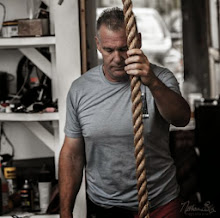I've written in the past that I am concerned about how erroneous information gets propagated as fact. To hopefully not propagate erroneous information I want to write a little more about the SeaBiscuit article.
In my analysis one reason why Seabiscuit was so effective was his ability to coil his lumbars and therefore have his rear feet on the ground for a long time, transferring energy to the job of moving the body (center of mass or COM. Seabiscuit could do this, lumbar coil, because his shoulders were free enough to allow the thorax to rise between them. This is obvious when watching him walk, the initiation of the movement happens with the upward movement of the sternum. The free shoulders allows Seabiscuit's neck to rise at the base and round at the top. This is what we want.
Contrast this with Phar Lap, who also had a phenomenal lumbar curving movement but not free shoulders. To allow for the tissue length needed to coil Phar Lap, since he couldn't raise his thorax, brought his head up and bulged the base of the neck out--ventrally--causing a ewe neck.
The error that I am concerned about spreading is one that postulates that the important function in lumbar coiling is the rounding of the back, its not! The rounding is a secondary effect, and important one, but not the initiator. What allows and causes the rounding is the thorax rising between free shoulders. This is often called "lightning the forehand" or "collection" or moving the weight to the rear...which all happens as a result of shoulder freedom.
The next time you look at a horse moving at a canter or gallop--this is where the lumbar coiling is obvious--look for the rising of the thorax between the shoulders that precedes the coiling. If there isn't much coiling than there isn't much shoulder freedom.
Tuesday, September 30, 2008
Subscribe to:
Post Comments (Atom)




No comments:
Post a Comment